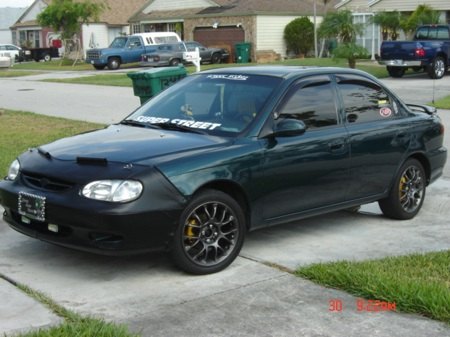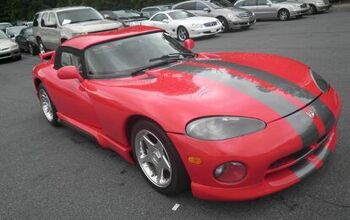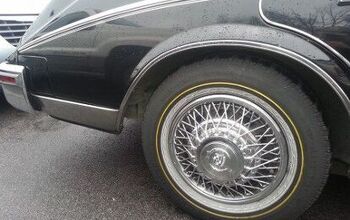Hammer Time: Kiametrics
What is quality? Consumers believe they find it in a car that never breaks. Engineers look all the way to the parts level and see how long a given component actually lasts. Advertisers bullshit their way through it, and dealers don’t care so long as the car gets out of the lot before the wheels fall off. As a car guy, I look at how long someone owns a car and WHY they get rid of it. Case in point. I now have access to a database that will eventually cover over 200,000 trade-ins over the course of the year. As someone who has a keen interest in metrics, I’ve found that the current vehicle’s mileage and condition at trade-in time can tell me an awful lot about quality. The findings?
No surprise. ‘Quality’ brands will have a high number of trade-in’s with over 150,000 miles and bulletproof powertrains. To that level of achievement I find that the Toyonda combo and the Ford/Chevy truck platforms are the best of the breed. Subaru, Volvo (mostly defunct models), and old school Benzes are right up there as well. Best case in point? This week 37 Lexii were traded in. 17 out of those 37 were traded in with over 150,000 miles. Out of the 37 traded in, only one had a noticeable problem with it’s powertrain (transmission needed service). Over the year I will usually see Lexus hovering around the 30 percent to 40 percent level for over 150k and less than five percent of their trade-ins will have noticeable powertrain issues.
On the nadir of the scale are the usual suspects. You have Kia, Saab, Jaguar, Land Rover, Suzuki . . . and VW. Kia had absolutely none (as usual) out of 27 with over 150k, and six with severe powertrain issues. The next 4 brands only had one trade-in with over 150k (a pre-GM Saab). Then there’s VW. VW never fails to shock. Only five trade-ins out of 89 this week had over 150k. Fourteen of these VW’s had severe powertrain issues. This brings me to how most of the European brands perform against models that cost a fraction of the price.
Terrible. God awful. In fact, I’ve seen weeks where a single Japanese model can have more 150k+ trade-ins than the entire European continent, despite a fifth of the trade-in volume. This week it was the Toyota Camry with 32 (out of 84), Honda’s Accord had 24 (out of 74), BMW did extraordinarily well this week with 20 (out of 76). Mercedes was far behind with 11 out of 51 (the 1980s models saved them). Audi squeezed out 2 (out of 27). Land Rover, Jaguar, and Saab had 1 (out of 33). And Volvo was surprisingly low with 7 out of 50. All pre-Ford. That total would have likely doubled if their damned odometers didn’t always break.
The Americans? Mostly between 10 and 20 percent. Standouts usually include the Chevy Suburban (12 out of 22), Ford Explorer (22 out of 66), and absolutely nothing from Chrysler. Lincoln and Cadillac are usually on the lower side of the scale while the Mustangs (3 out of 39), and Dakotas (0 for 16) seem to never fail in bringing out the literal rear. Overall, I believe Barack and Co. could do worse by divining these stats in order to determine what needs saving, and what needs killin’.
More by Steven Lang
Latest Car Reviews
Read moreLatest Product Reviews
Read moreRecent Comments
- Arthur Dailey We have a lease coming due in October and no intention of buying the vehicle when the lease is up.Trying to decide on a replacement vehicle our preferences are the Maverick, Subaru Forester and Mazda CX-5 or CX-30.Unfortunately both the Maverick and Subaru are thin on the ground. Would prefer a Maverick with the hybrid, but the wife has 2 'must haves' those being heated seats and blind spot monitoring. That requires a factory order on the Maverick bringing Canadian price in the mid $40k range, and a delivery time of TBD. For the Subaru it looks like we would have to go up 2 trim levels to get those and that also puts it into the mid $40k range.Therefore are contemplating take another 2 or 3 year lease. Hoping that vehicle supply and prices stabilize and purchasing a hybrid or electric when that lease expires. By then we will both be retired, so that vehicle could be a 'forever car'. Any recommendations would be welcomed.
- Eric Wait! They're moving? Mexico??!!
- GrumpyOldMan All modern road vehicles have tachometers in RPM X 1000. I've often wondered if that is a nanny-state regulation to prevent drivers from confusing it with the speedometer. If so, the Ford retro gauges would appear to be illegal.
- Theflyersfan Matthew...read my mind. Those old Probe digital gauges were the best 80s digital gauges out there! (Maybe the first C4 Corvettes would match it...and then the strange Subaru XT ones - OK, the 80s had some interesting digital clusters!) I understand the "why simulate real gauges instead of installing real ones?" argument and it makes sense. On the other hand, with the total onslaught of driver's aid and information now, these screens make sense as all of that info isn't crammed into a small digital cluster between the speedo and tach. If only automakers found a way to get over the fallen over Monolith stuck on the dash design motif. Ultra low effort there guys. And I would have loved to have seen a retro-Mustang, especially Fox body, have an engine that could rev out to 8,000 rpms! You'd likely be picking out metal fragments from pretty much everywhere all weekend long.
- Analoggrotto What the hell kind of news is this?


































Comments
Join the conversation
The Neon would wholesale for $200 to $400. An 11 year old cheap car with a buck 80? CarPerson, you ready to write a check for $1,500 for that beauty? Just wondering.
and that is my car there... it dont look like that anymore, with almost 200,000 thousand miles on it still strong, i have always do the oil change my self and do all the maintenance, timing belt, spark plugs, belts, everything, this car is a actually 2 times national winner at NOPI nationals car show in atlanta, with of course 30 something other trophys at the local car show, i love this car and have never gime a problem at all...